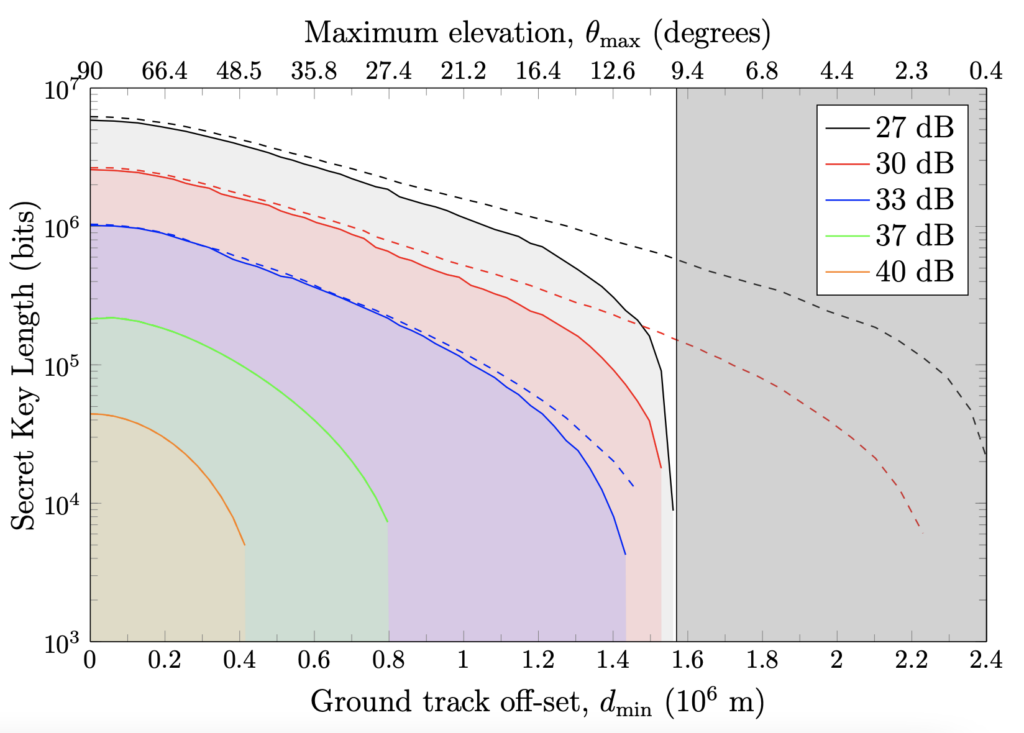SatQuMA is a numerical toolkit that determines the finite key capacity in satellite-based quantum key distribution (SatQKD). It is being developed to provide modelling and analysis for SatQKD missions and is available to download on GitHub!
Current version: Version 1.0.
System requirements: To run SatQuMA, you must have access to Python3 (version 3.9 preferred). This can be downloaded here: https://www.python.org/downloads/
Documentation for SatQuMA is also available here. We welcome contribution to develop further modules.
Our analysis helps develop an intuition on the effects of different operational scenarios on the finite secret key length (SKL), which will help inform and guide the development of source and receiver systems in future satellite missions. For the type of analysis that can be achieved with SatQuMA, see our analysis of finite key effects in SatQKD [1].
For example, SatQuMA can quantify the relative effects of different losses on the SKL (below left: SKL with different intrinsic quantum bit errors and extraneous count rates). Satellite overpass geometries also have a significant impact on the key generation footprint. For a specific operational configuration, SatQuMA can determine the expected annual SKL by integrating the SKL over all satellite overpasses within the SatQKD key generation footprint (below right: SKL with different satellite overpasses for different system losses).
- Dependence on different system losses
- Key generation footprint
Applications: SatQuMA is currently being used in a number of satQKD missions that includes:
- ROKS (Responsive 0perations key services)
- ViSatQT (Viable satellite free space optical QKD technologies)
- AirQKD (Terrestrial free-space systems)
[1] Finite key effects in satellite quantum key distribution, J S Sidhu, T Brougham, D McArthur, R Pousa, and D K L Oi, arXiv:2012.07829 (2021).

